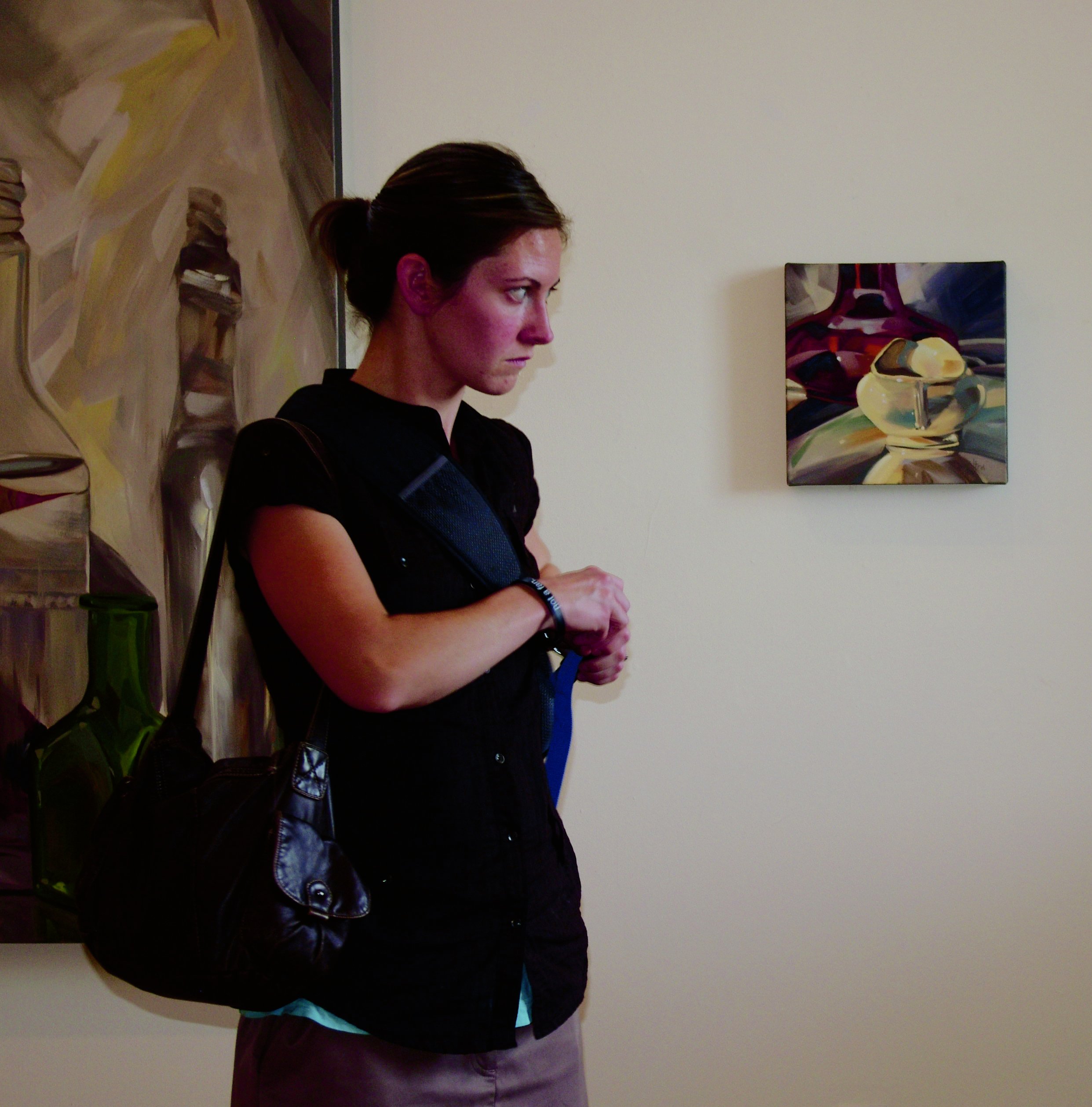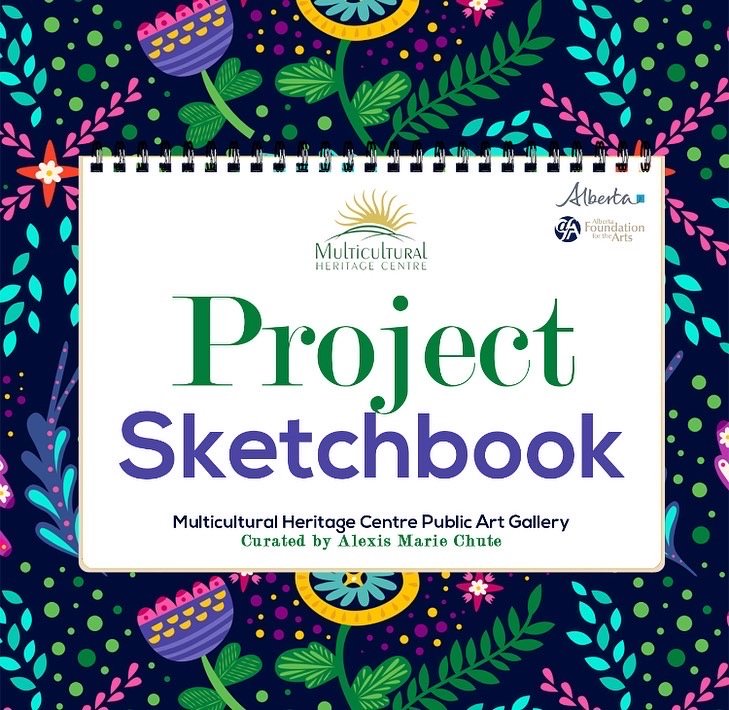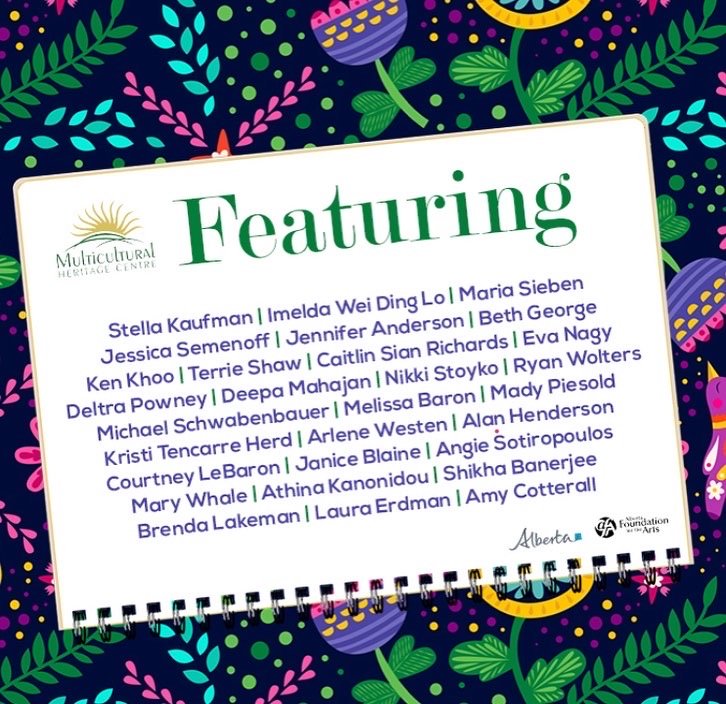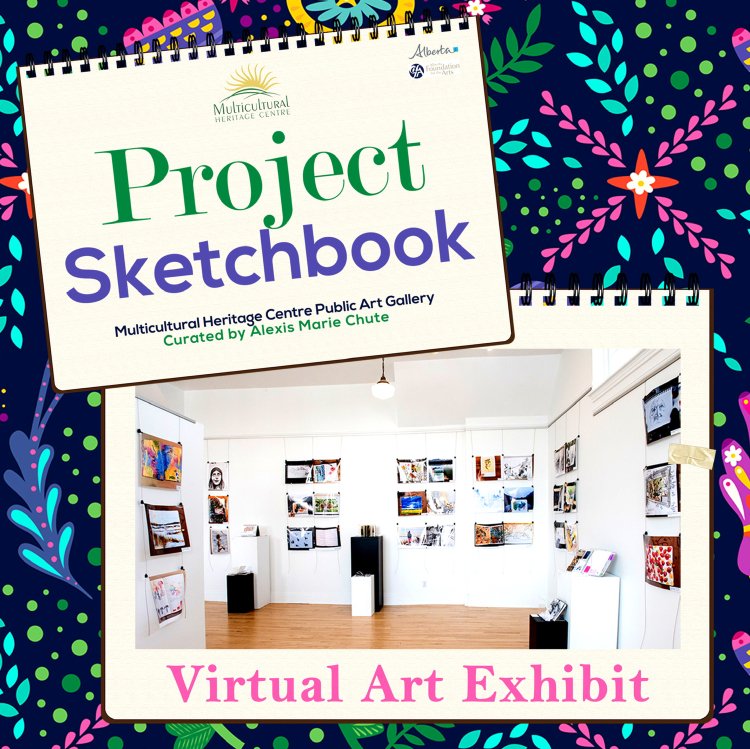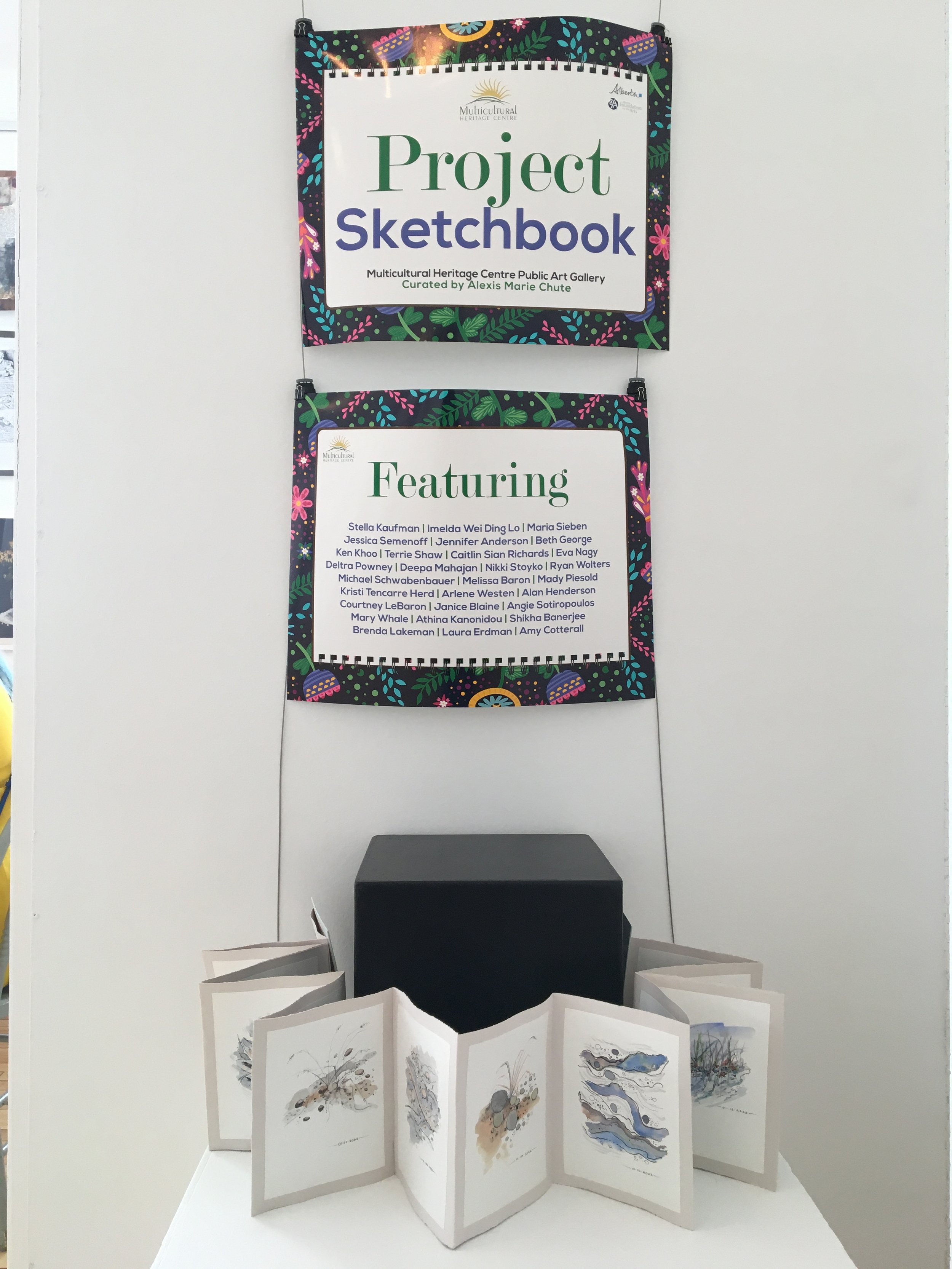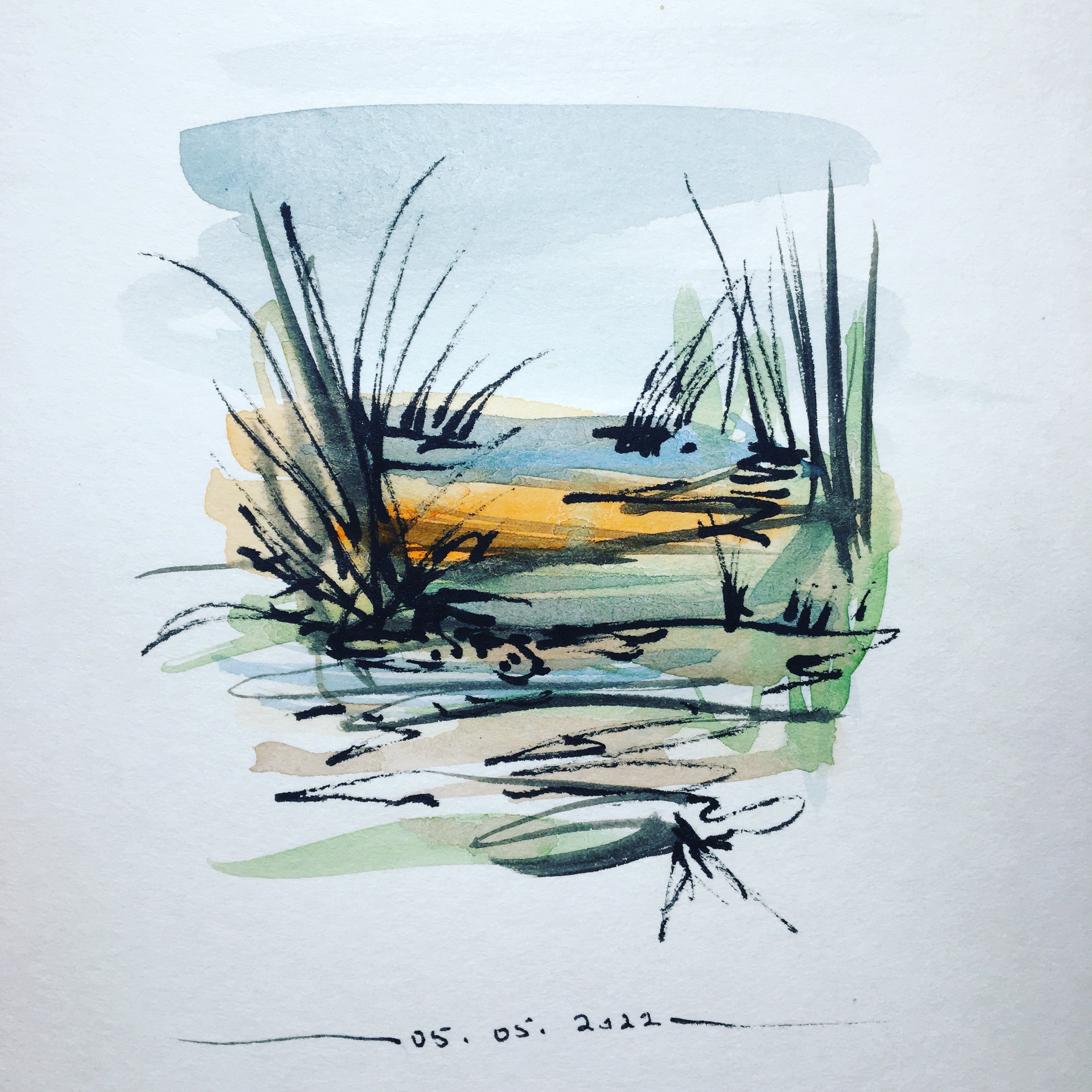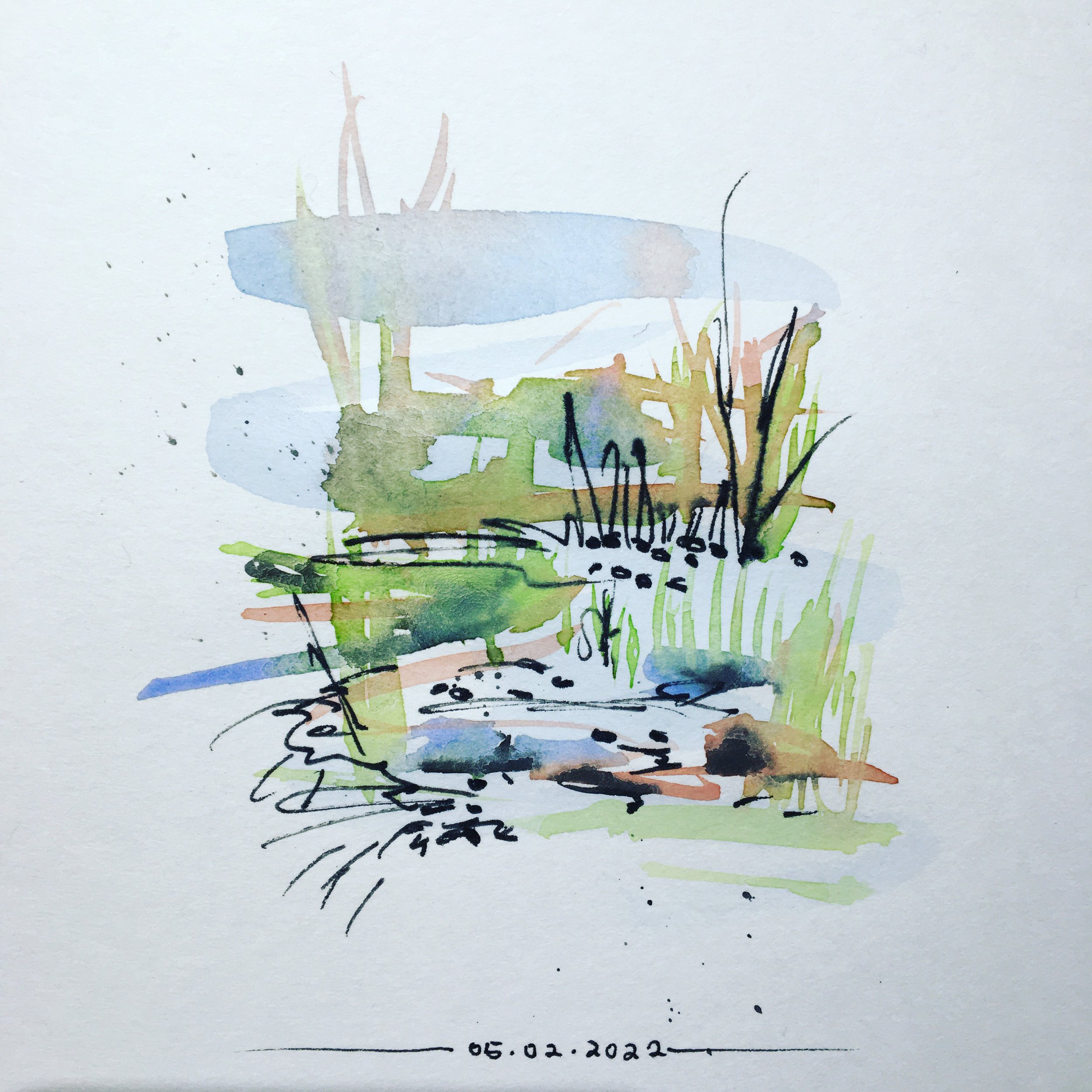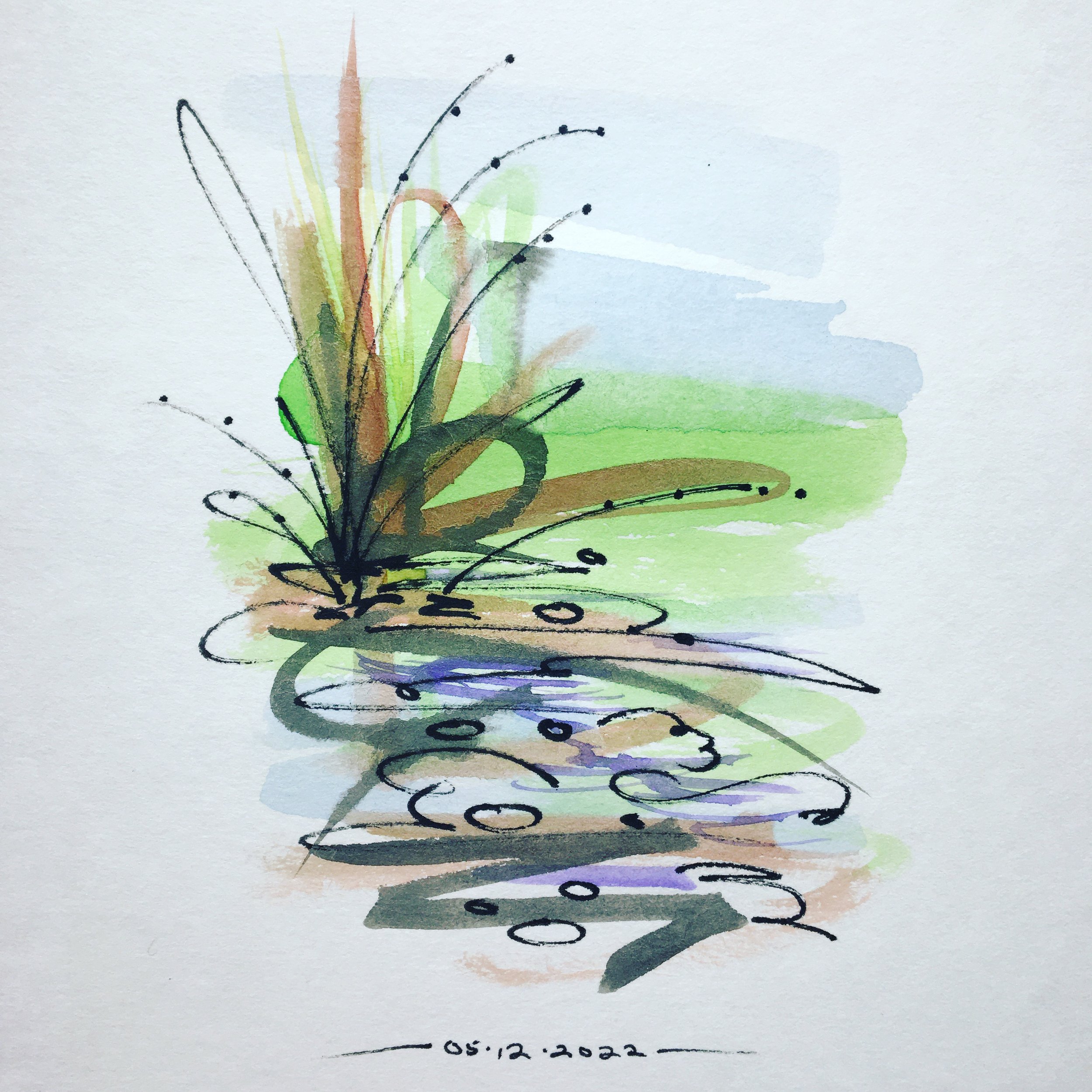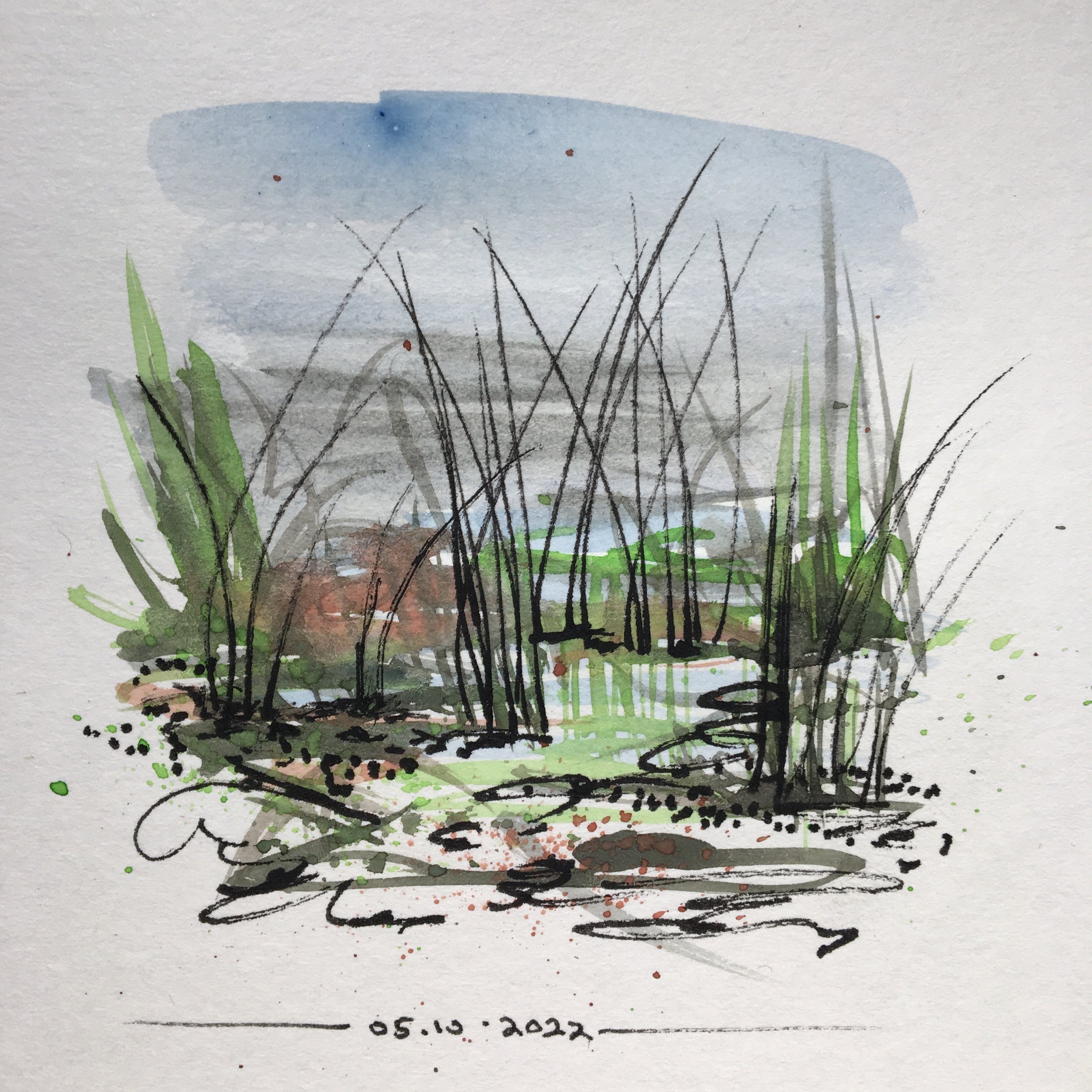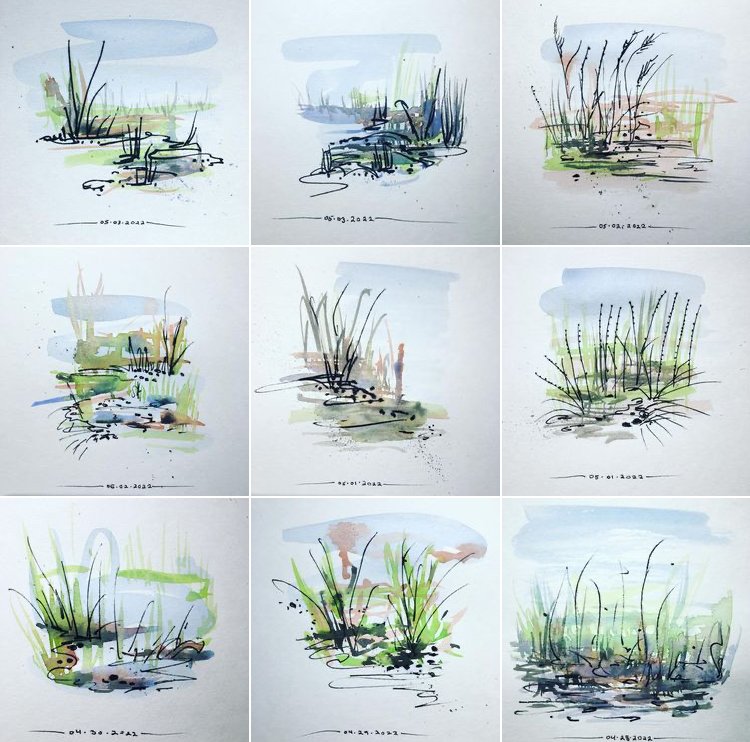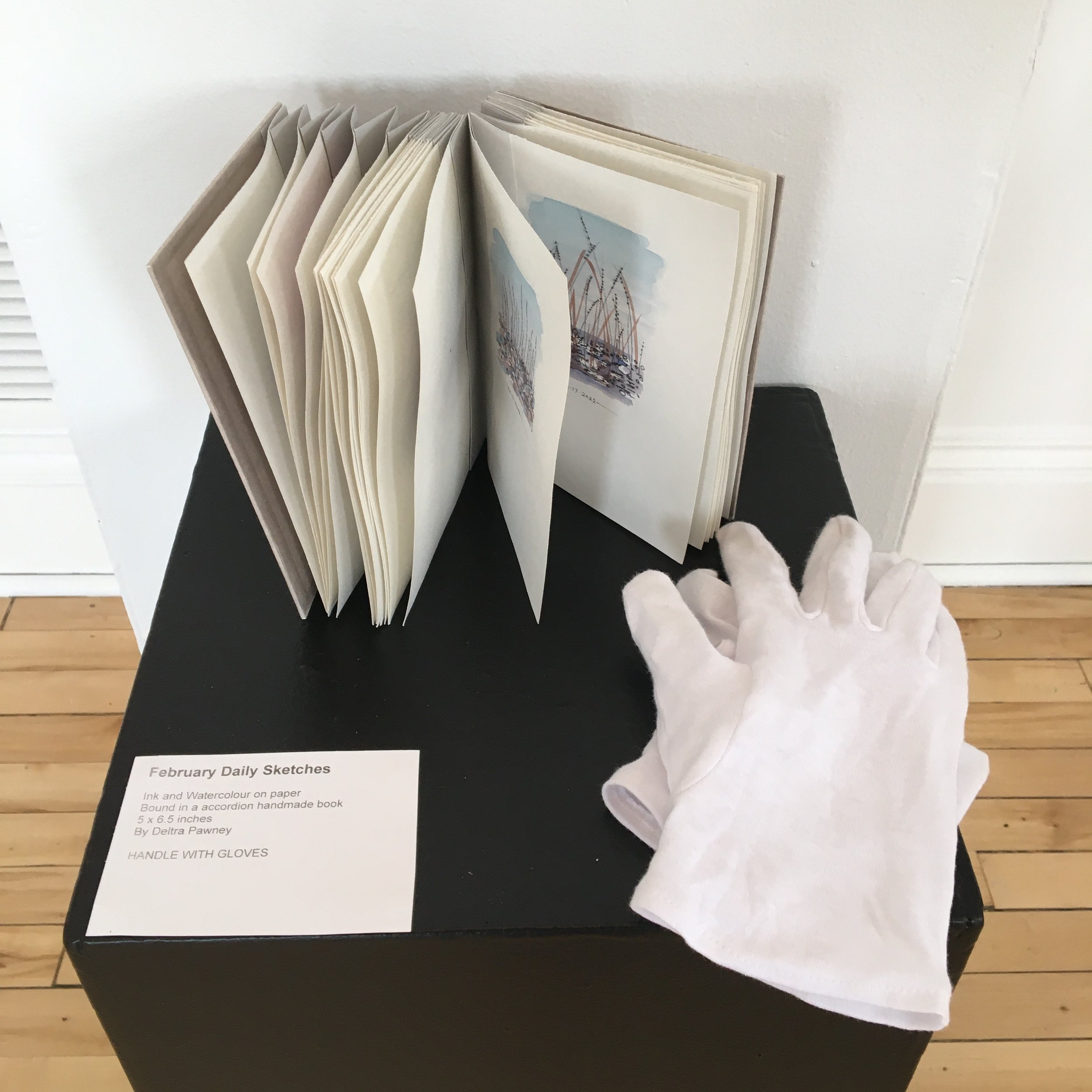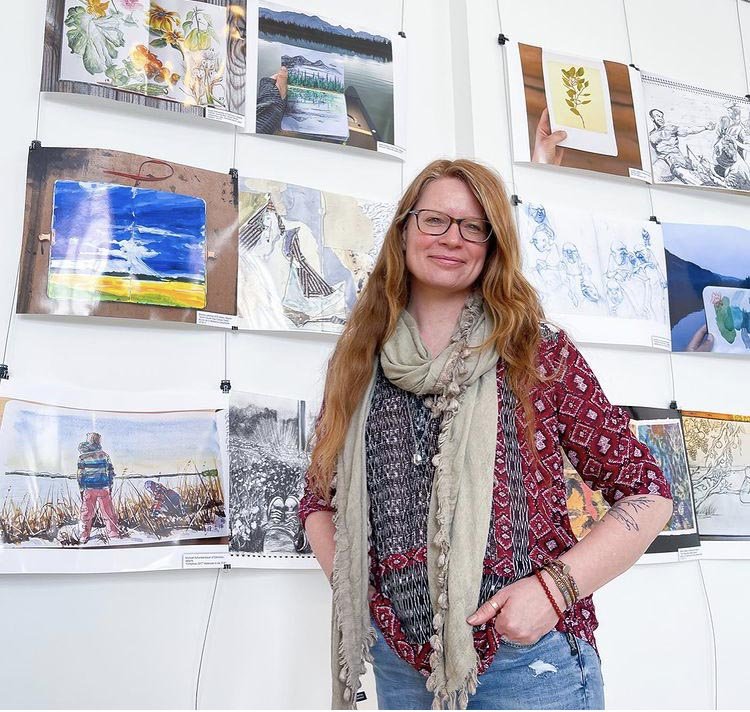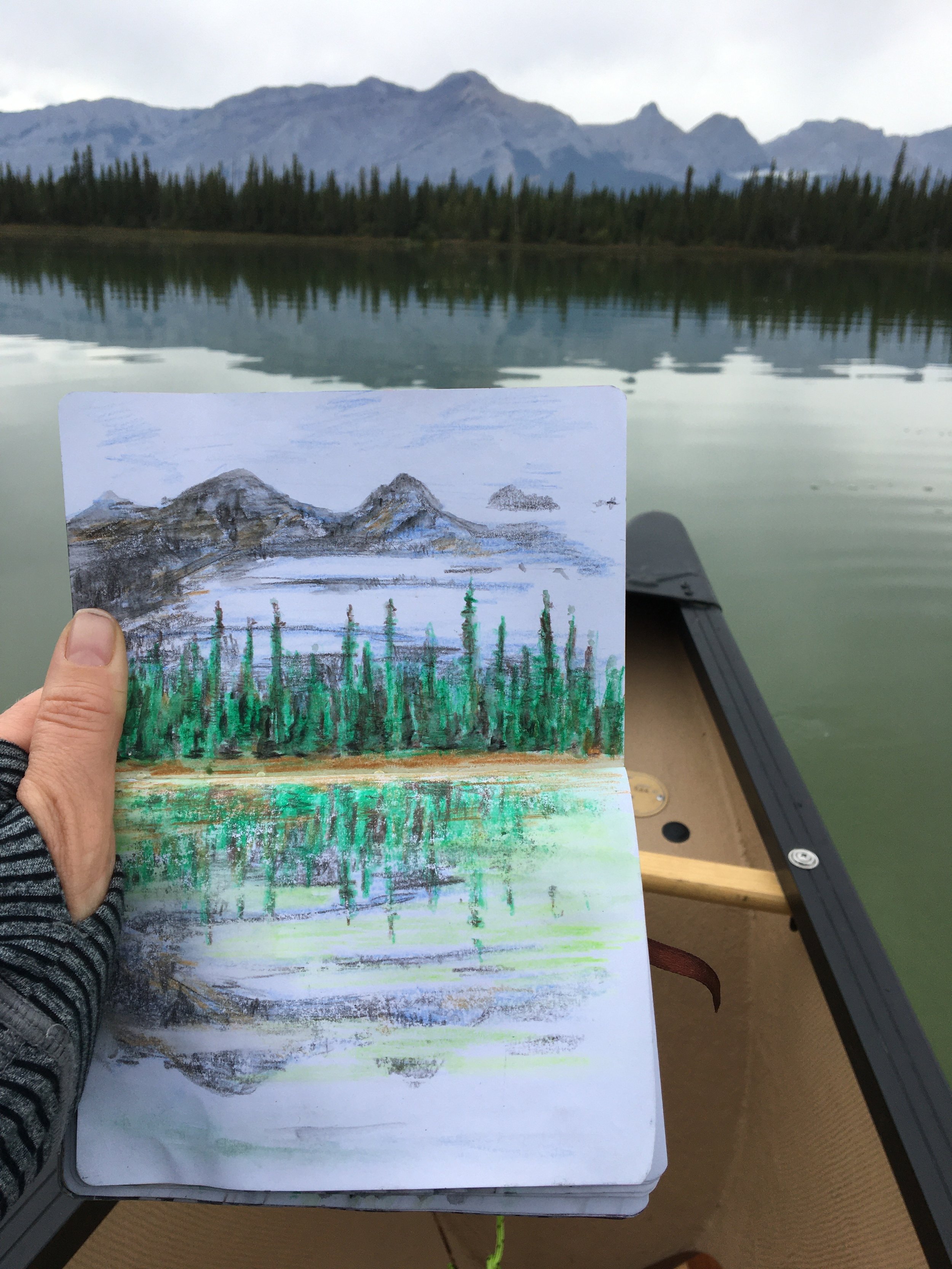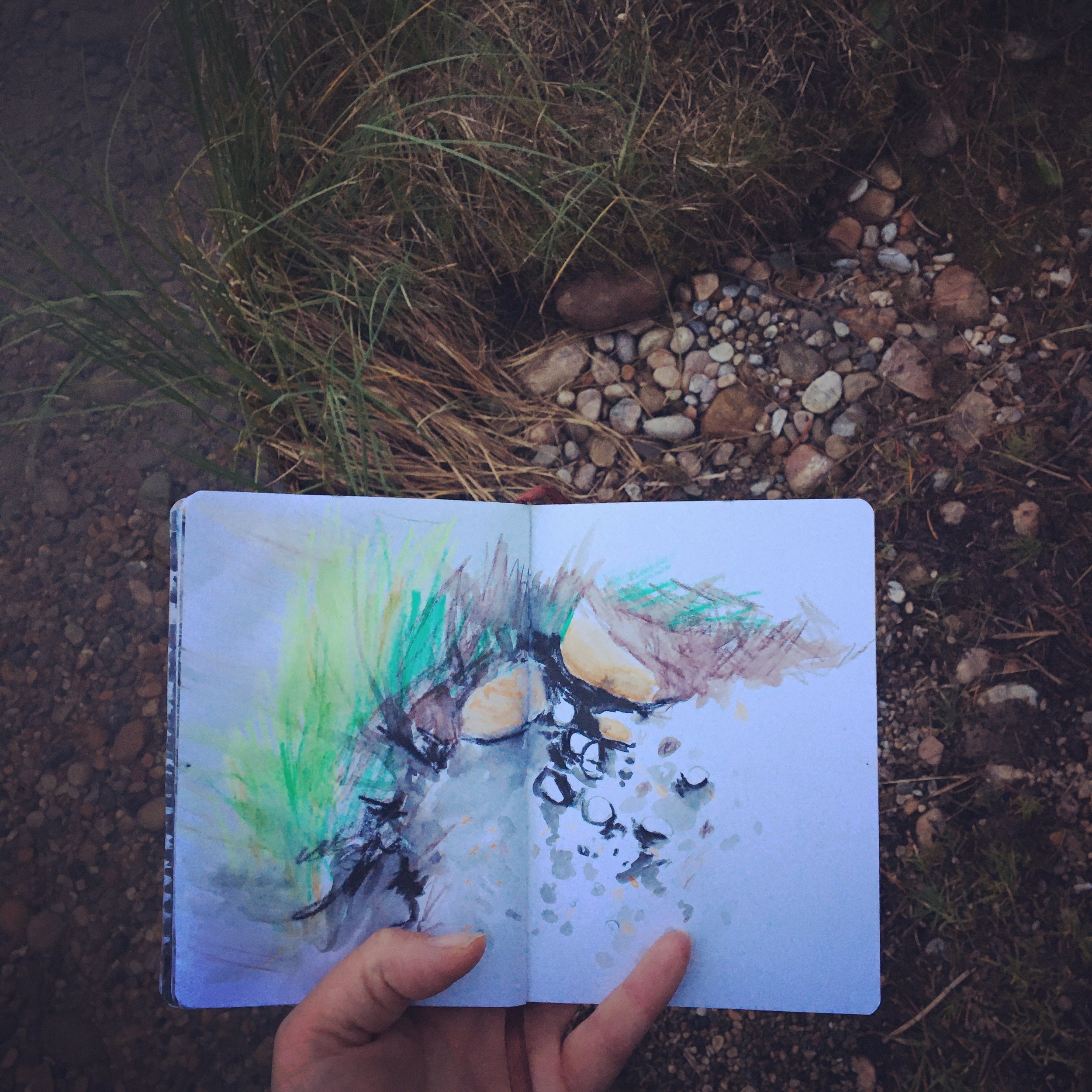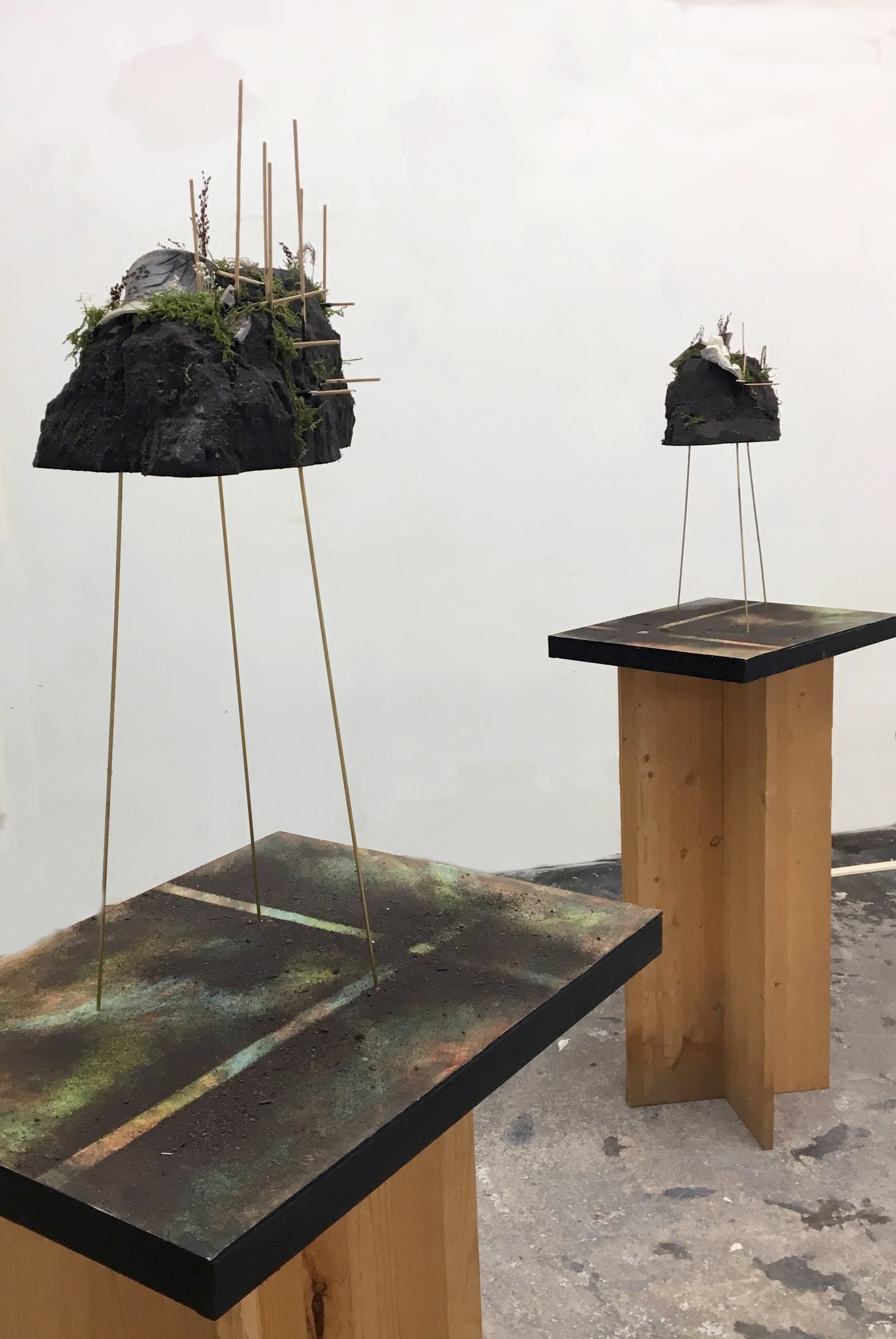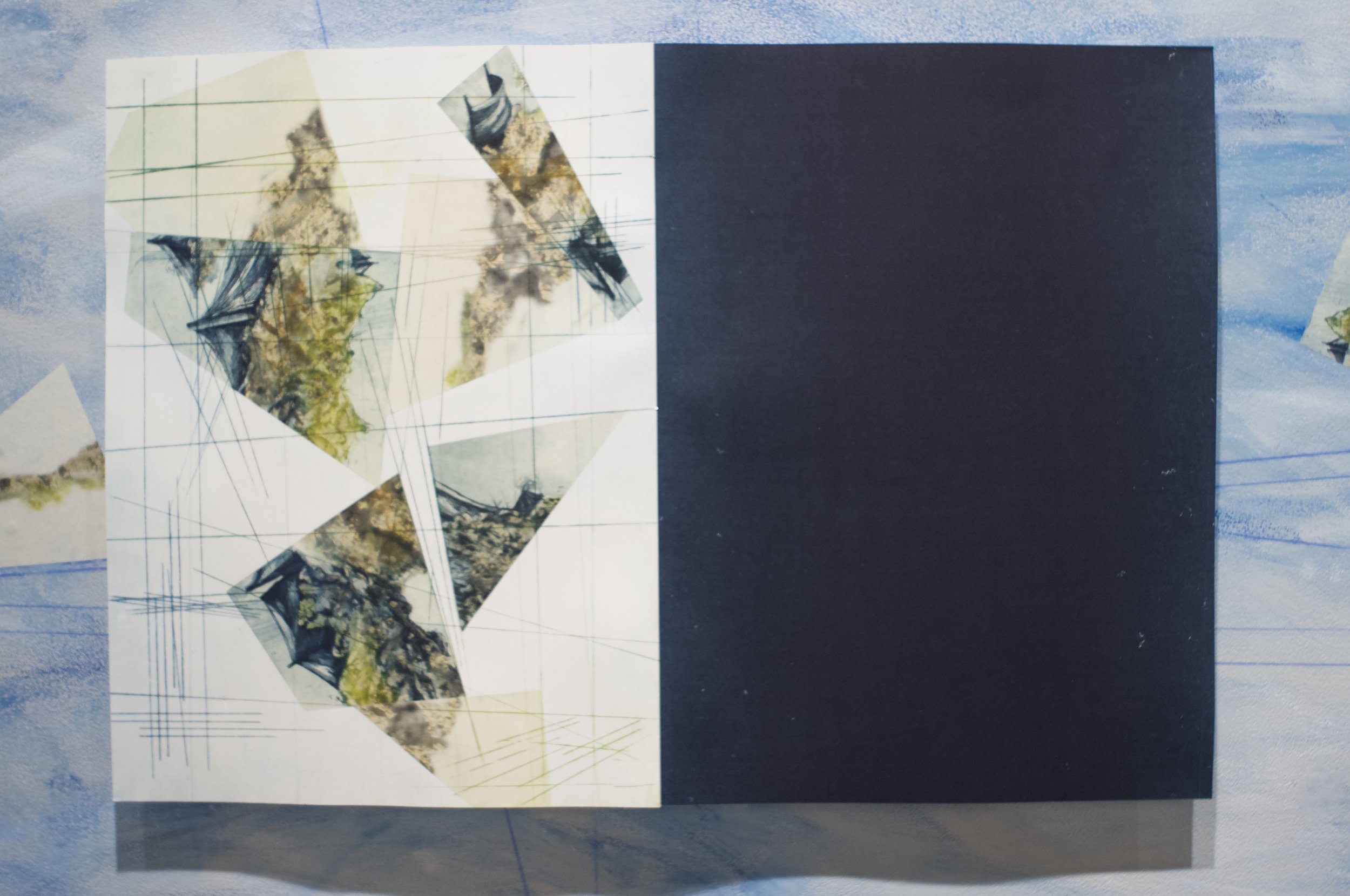Shorelines
Leduc Arts Foundry, 2023
Solo exhibition highlighting new paintings reflecting immersive experiences along the shorelines and banks of the North Saskatchewan River. Every season has something new to offer and this body of work captures moments within micro environment during every season of the year.
Eight large paintings displayed on Leduc Arts Foundry feature wall
Display panel of small and medium sized paintings
Display panel of small paintings
Small Works Big Wow
Red Brick Common Public Art Gallery, 2023
Group exhibition featuring smaller works of 11 local Parkland County, Alberta artists.
Walk about of the Small Works Big Wow Group Exhibition
Project Sketchbook
Multi Cultural Centre Public Art Gallery, 2022
This group exhibition highlighted the artist’s sketchbook and the various ways they are utilized within numerous art practices. The work shown here is part of my daily sketch practice of nature observed, remembered and imagined. Two art books housing sketches from January and February were exhibited along with photos of other sketch experiences.
Artifact of Place
Bleeding Heart Arts Space, 2018
With this work I am exploring the tension that exists between nature and humans through the use of organic materials juxtaposed with building materials within sculpture and installation.
An interest in soil sciences and human/soil relationships inform concept dealing with a sense of place, providing deep connection to landscapes and environments I live in and travel through. Influence by the Surrealist the work takes on a dreamlike quality. These sculptures are a reflection of experiences processed through the filter of anthropogenic responsibility and are artifacts of a place that exist between what was and what is yet be.
In The Absence of Knowing
Society of Northern Alberta Print Makers, Community Gallery, 2018
The work in this exhibition is a reflection of immersive experiences within liminal spaces. Places given meaning through memory and imagination. Macro and micro environments are considered through deconstructed, interrupted, layered, cropped, and contained imagery. The immensity of space juxtaposed with intimate interactions of micro environments create a sense of an altered reality amplifying a sensed tension. This exhibition explores the theme of sensed tension within liminal space. Memory, story, object, natural, and manmade environments inform narrative within the work, considering the ways in which experience poses juxtapositions informing a sense of place. In her book A Field Guide to Getting Lost, Rebecca Solnit speaks about the evocation of place and its emotional resonance (p113).
“Perhaps it’s that you can’t go back in time, but you can return to the scenes of a love, of a crime, of happiness, and of a fatal decision: the places are what remain, are what you can possess, are what is immortal. They become the tangible landscape of memory, the places that made you, and in some way you to become them. They are what you can possess and what in the end possess you (p117).”
Anthroprocities
Edged Out
Acrylic on Canvas
Painter and printmaker Deltra Powney is drawn to themes of growth, care, connection and disconnection, and the physical traces of human intervention on the land. She uses motifs of grids and scaffolding to give tangible form to our reshaping of the natural environment. Her large-scale paintings–though usually non-figurative–suggest a human presence through her expressive, gestural application of paint.
If you have ever flown over the prairies, Powney’s unconventional landscape painting may seem familiar. Edged Out recalls a bird’s eye view of land partitioned by fences, roads and all manner of economic and geopolitical boundaries. Well-defined gray areas circumscribed and divided by thick, geometric white lines echo the forms of virtual maps. Only thee areas have been rendered as flat gray colour fields; the rest of the canvas is interspersed with bright, shifting colour. The white and gray areas appear to be artificially superimposed on a continuous, dynamic background that recedes into the picture plane, much like a concrete road may intersect grassland. This map is land is home is a colour-coded battlefield of rigid gray and organic flux.
Through its use of colour and composition, Edged Out references the deliberate separation of built structures and the natural environment, as well as the dynamic competition between the two as it plays out on the landscape. Land, Earth and its inhabitants are edged out and divided as development projects seek to expand. Yet, man-made structures eventually get edged out as nature reclaims its place; subtle tints of green in the brown field on the lower left side hint at nature’s resiliency.
While Edged Out challenges narratives of human intervention on the land as progress, it does not overtly critique human intervention. Rather, the work presents man-made structures and the natural environment as interdependent equals engaged in a tense dynamic equilibrium. Edged Out thus offers a space for contemplation on human connection with the land we occupy, asking; how do we balance our needs with those of the environment? How do we form just, equitable relationships with the land?
By Liuba González de Armas
Gathered
The work in this exhibition is and exploration of working on larger scale canvases. Considering the larger format I am able to arrange larger groupings of objects in order to complicate the arrangement. The result is an intense study of negative shape, considering what is happening between the objects. Space is amplified, reflections and shadows becomes more important. That which is can be easily overlooked becomes centre stage.

















